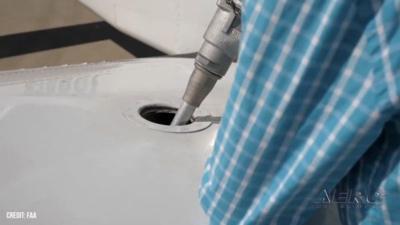Sat, Aug 23, 2025
PAFI Program Puts New Fuels Through Years of Testing Before Approval
The Federal Aviation Administration’s Piston Aviation Fuels Initiative (PAFI) is the only path for unleaded aviation fuels to clear regulatory hurdles… and it is not designed for shortcuts. Race Fuel Technology developer VP Racing is diving headfirst into this multi-year process with its UL100E unleaded avgas.

PAFI runs new fuel formulations through a multi-phase process that ranges from chemical analysis to full-scale flight testing, all aimed at making sure any candidate can match or exceed the long-standing performance of 100LL. The procedure is deliberately exhaustive; piston aircraft engines do not take kindly to surprises at altitude.
As a result, the PAFI timeline is measured in years rather than months. Phase I begins with lab work, looking at chemical composition, material compatibility, and baseline specifications. Fuels that survive move on to Phase II, where they are burned through piston aircraft engines under controlled conditions to measure performance, emissions, and wear. Successful candidates then go airborne for flight tests in real-world environments, followed by data reviews that can drag on for months.
VP Racing was one of the first to enter the PAFI program. Its submission is the UL100E unleaded avgas, which already passed a 350-hour durability test and is now in engine and flight testing under FAA oversight. These steps don’t mean approval is imminent…but they do mean UL100E is far enough along to be treated as a serious contender.

“Developing UL100E has required an exacting level of precision, both in the VP lab here in Texas and through PAFI’s rigorous testing structure,” explained Mark Walls, Director of R&D at VP Racing. “The PAFI process has been challenging, but it's validated the strength of our approach and the robustness of UL100E. It’s incredibly rewarding to see this fuel perform consistently across such a wide range of platforms.”
What gives UL100E some momentum is its chemical profile, which avoids corrosive or environmentally questionable ingredients while still delivering the required detonation resistance. It aims to provide the same high octane and thermal stability of conventional fuels, just without the unwanted and unsustainable ingredients.
More News
Option Approach An approach requested and conducted by a pilot which will result in either a touch-and-go, missed approach, low approach, stop-and-go, or full stop landing. Pilots >[...]
"Emirates is already the world's largest Boeing 777 operator, and we are expanding our commitment to the program today with additional orders for 65 Boeing 777-9s. This is a long-t>[...]
(Pilot) Reported That There Was A Sudden And Violent Vibration Throughout The Airplane That Lasted Several Seconds Analysis: The pilot was returning to his home airport at an altit>[...]
“This recognition was evident during the TBMOPA Annual Convention, where owners and operators clearly expressed their satisfaction with our focus on customer service, and enc>[...]
Overhead Maneuver A series of predetermined maneuvers prescribed for aircraft (often in formation) for entry into the visual flight rules (VFR) traffic pattern and to proceed to a >[...]
 ANN's Daily Aero-Term (11.19.25): Option Approach
ANN's Daily Aero-Term (11.19.25): Option Approach Aero-News: Quote of the Day (11.19.25)
Aero-News: Quote of the Day (11.19.25) NTSB Final Report: Sting Sport TL-2000
NTSB Final Report: Sting Sport TL-2000 Aero-News: Quote of the Day (11.20.25)
Aero-News: Quote of the Day (11.20.25) ANN's Daily Aero-Term (11.20.25): Overhead Maneuver
ANN's Daily Aero-Term (11.20.25): Overhead Maneuver




